Pictures taken near Calais and Dunkirk over the last few days appear to show French police using tear gas on migrants to prevent them from boarding boats. Some of the images also depict police officers waist deep in water, using riot shields and batons to try and force the migrants to return to the beach. Smugglers too appear to be deploying novel tactics, offering a taxi boat along the coast before boarding a boat to cross the Channel.
"I have never seen these kinds of actions from the police before," explained a British photographer, Dan Kitwood, who took some of the images for the picture agency Getty. Kitwood was present at the Gravelines beach, a few kilometers from Dunkirk, on Friday (June 13) in the early hours of the morning. He was referring to the actions of French police officers entering the water up to their waists in full riot gear to try and dissuade a group of migrants from boarding a boat. He spoke to the French public broadcasting service Franceinfo for an article published on June 18.
Further pictures taken on June 17 by another British photographer, Gareth Fuller, for PA Media show clear clouds of tear gas as migrants crouch on the beach in apparent distress because of the gas surrounding them.
In another of Fuller’s pictures, two young migrants support an older man who looks like he might have difficulty walking. One of the younger migrants is holding up a crutch, which most probably belongs to the older man, who looks like he is dragging his legs slightly as they apparently wade towards the shore, perhaps unable to board a boat.
Read AlsoTwo migrants shot dead and five injured in northern France
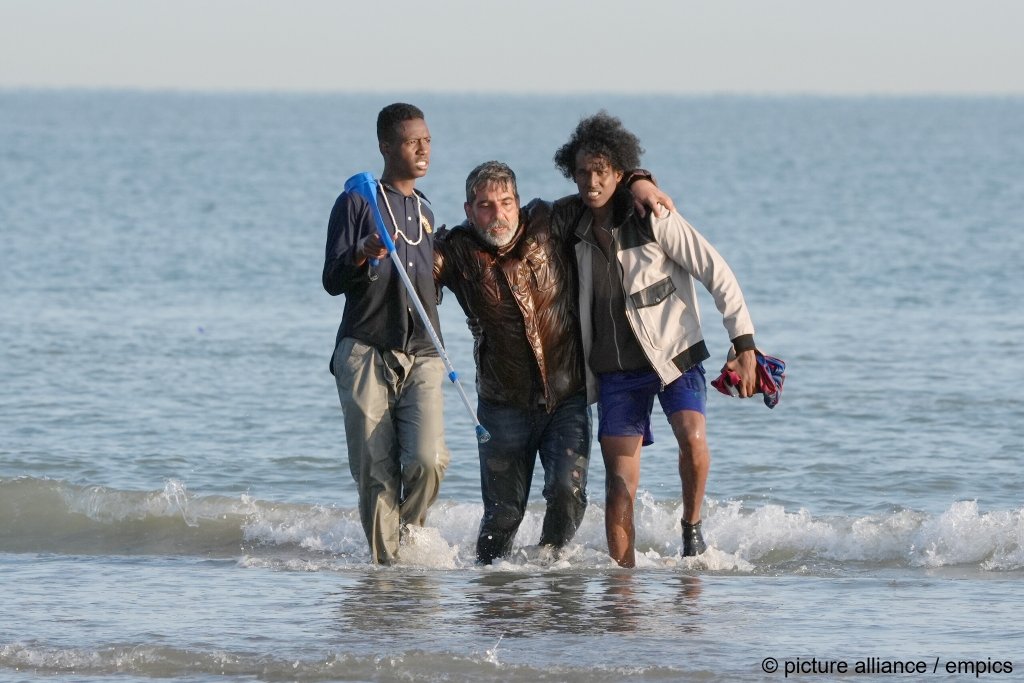
Pregnant woman offered help
On Tuesday, at least ten boats tried to set off along the northern French coast, French media, including regional newspaper La Voix Du Nord and Franceinfo, reported.
One pregnant woman, reported to be in her twenties and originally from Syria, had to be rescued near Le Touquet. She was offered aid by the fire service from Étaples and given a medical examination after she complained of chest pain.
The French National Society for Rescuers at Sea (SNSM – Société nationale des sauveteurs en mer) scrambled to accompany one boat until Boulogne. Some migrants were waiting on the shore in the hope of joining later boats. "About 40 of them were not able to board the boat," said Marc Lamblin from the French rescue service.
Read Also
UK border security chief seeks to intercept smuggling networks
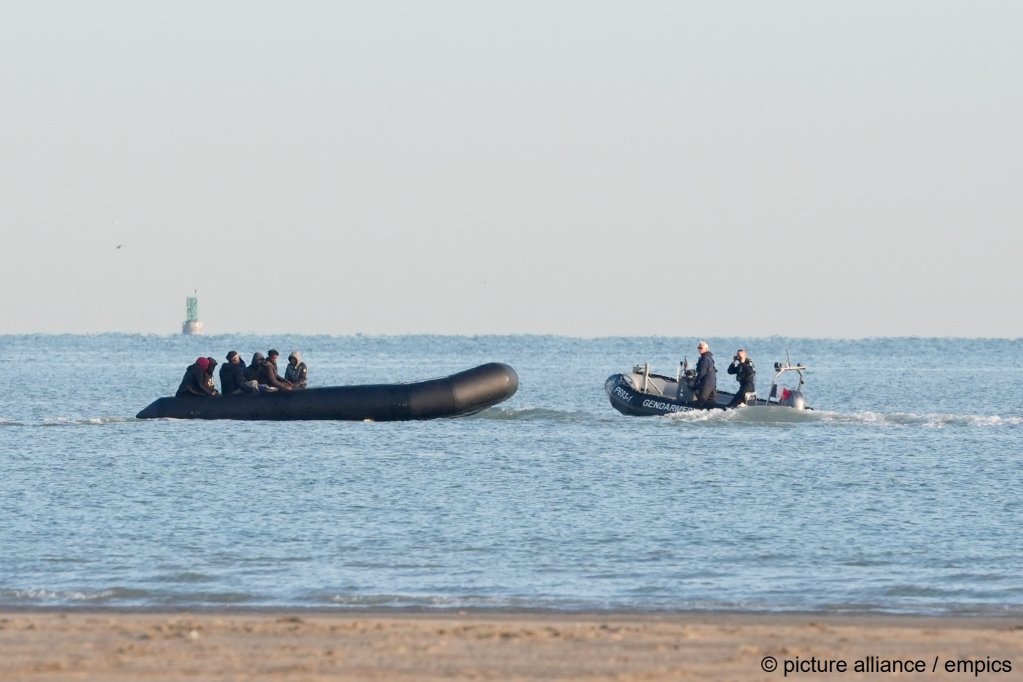
'Taxi-boats'
The smugglers too appear to be deploying novel tactics. French media describe the use of "taxi boats," which appeared to be passing along various beaches picking up people before beginning the Channel crossing.
According to La Voix du Nord, on June 17, one "taxi boat stopped at one beach between Le Touquet and Stella Plage, before traveling to another beach at Hardelot. One boat set off around 7am, and another boat came from Dannes a bit later. Around 10am, another boat was due to arrive and more people emerged from the dunes at Hardelot.
Read AlsoChannel: Britain and France sign another 'road map' amid increase in migrant arrivals to UK
A change in police tactics?
Pictures from Tuesday's departures also show police standing on the shore, some with riot helmets on and batons in their hands, and a policeman holding his riot shield as migrants emerge from the bushes behind the beach at Gravelines, surrounded by a cloud of tear gas. Some of the migrants are sitting on the floor with their mouths open, perhaps trying to mitigate the effects of the tear gas.
Organizations that support migrants in the area told Franceinfo that they fear these interventions mark a change in police tactics.
"Everything became fairly chaotic. People were shouting and children were crying," remembers Dan Kitwood, referring to the scenes he witnessed on Gravelines beach on Friday, June 13.
Just before 5 am, about 30 migrants emerged from the dunes, including at least five children, Kitwood told FranceInfo. There were a few who hid their faces and were not wearing life jackets. Kitwood suspects they "could have been smugglers."
About ten minutes later, a small boat appeared on the shore and headed towards the group in the water. About ten police officers appeared from the dunes -- some ran into the sea "to try and get the migrants to leave the water," says Kitwood.
Some of the men in the group started to splash around to try and keep the police officers away from the group. "There was a bit of a struggle with one of the police officers who was finding it hard to stand up in the water with all his equipment on," Kitwood told Franceinfo.
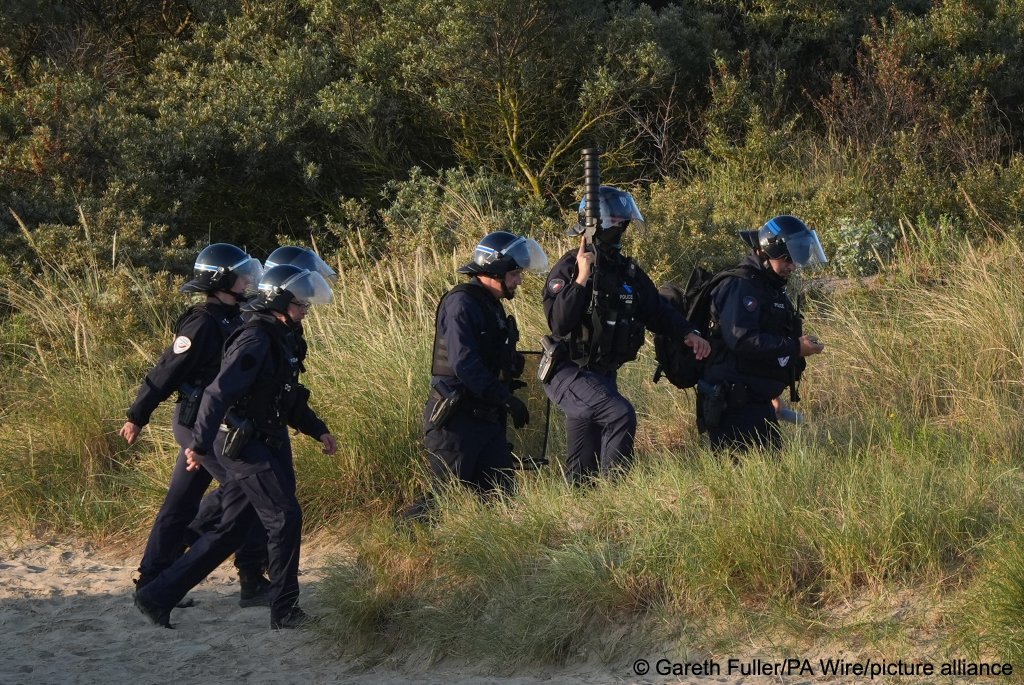
Read AlsoBritish PM under fire for failing to contain irregular Channel arrivals
Tear gas
"At this point, an officer got out a can of tear gas and used it on the people who were being most aggressive." At a certain point, the police officers realized they couldn’t do much else, remembers Kitwood, and they left the water. There were too many migrants and the currents were strong, thinks Kitwood.
One family with children, who got caught up in a cloud of tear gas, was forced to return to the beach.
In spite of the intervention, around half of the group managed to board the boat, says Kitwood. The photographer has been covering this story for some time. He doesn’t think the police officers "used disproportionate force, and neither were they too aggressive."
Kitwood thinks they were "trying out a new tactic, but it didn’t work very well." He thinks that trying to enter the water dressed in full riot gear was dangerous both for the police and the migrants. "You can’t imagine if one of the officers slipped in the water with the weight of his shield or other equipment, or perhaps with someone on top of him…" conjectures Kitwood.
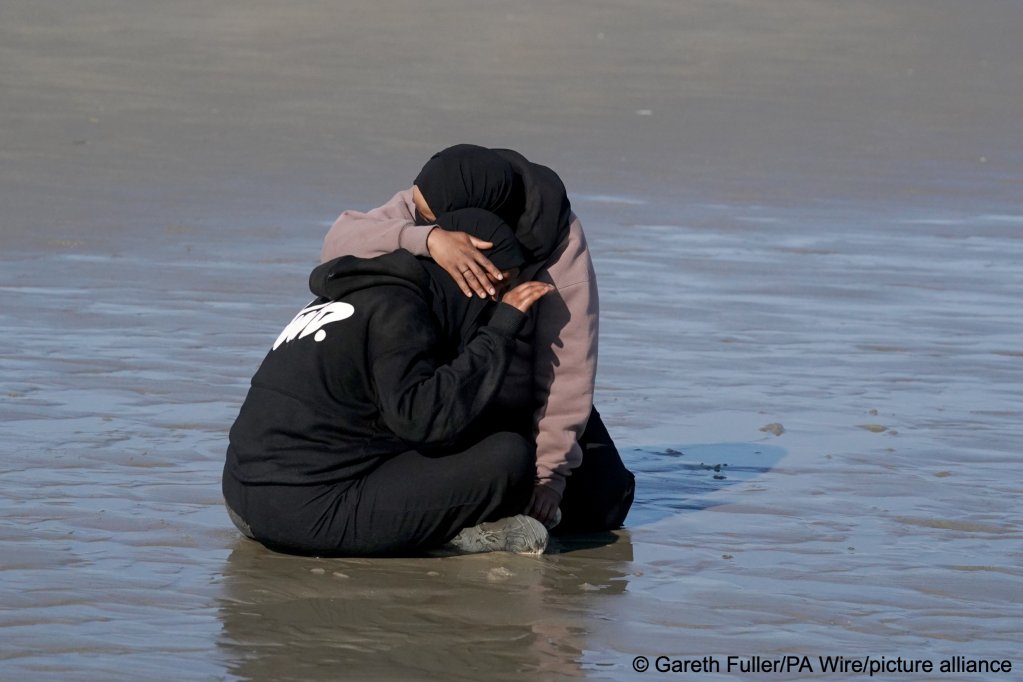
Read AlsoTwo dead bodies found on French shores as authorities rescue dozens at sea
Interceptions in the water
Earlier this year, French Interior Minister Bruno Retailleau told the news portal ICI Nord that the French police mobilize around 1,200 officers along the French coasts, "730 of them are financed by the British," said Retailleau. The financing comes as part of the last treaty signed between Britain and France seven years ago.
Interceptions of migrants in the water are allowed under rules issued by the French prefecture, which is under the command of the Interior Ministry. However, entering the water in full riot gear is "exceptional," the French newspaper Le Monde underlined.
The organization Utopia 56, which works with migrants across France, told Franceinfo this was the first time that migrants had witnessed police wading in so deep. "We are now asking ourselves just how far the French government is prepared to go, perhaps because of the pressure coming from the British government," Charlotte Kwantes, spokesperson for Utopia 56 told Franceinfo.
Kwantes refers back to statements made by the British at the end of May that appeared to urge the French authorities to change their "operational policy and make the necessary changes" to try and prevent people from boarding the boats. In that statement from May 31, Kwantes points out that these changes could have been to encourage the authorities to "stop the boats in shallow water as quickly as possible."
Read AlsoFrance: Eritrean migrant dies in Calais area
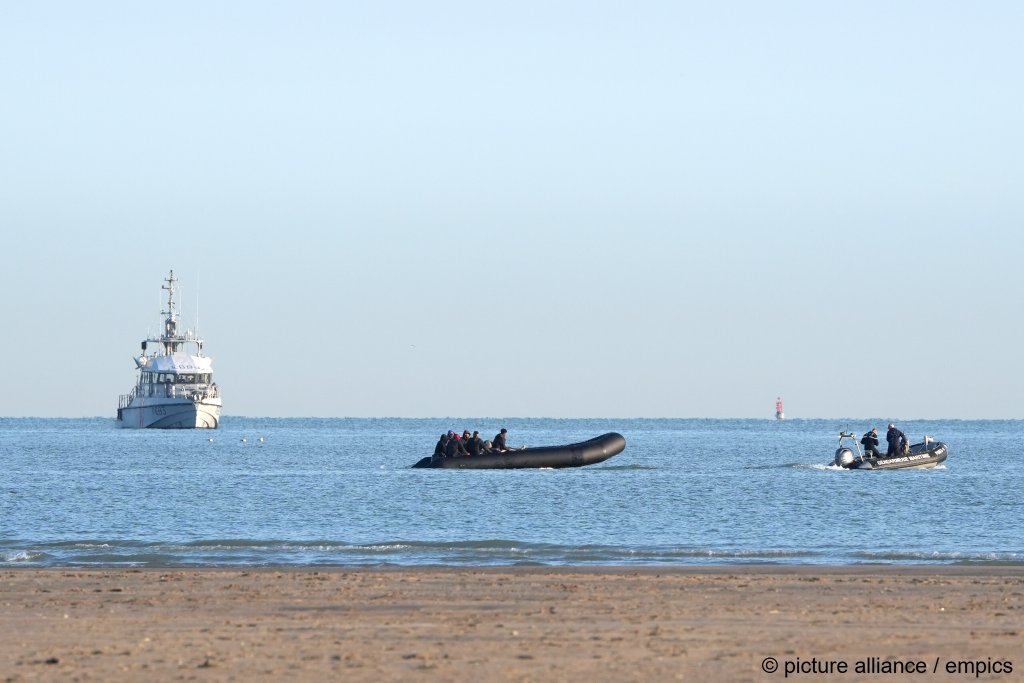
Migrant organizations fear that more violence could be deployed
Back in February, during a visit to northern France, Bruno Retailleau suggested that interceptions could take place up to 300 meters from the coast. While authorities appear to want to block access to the sea, Kwantes believes a total block is impossible. She worries, however, that attempts to do so "could lead to more violent methods being deployed."
Rescue organizations are also worried by this apparent change of tactic. One anonymous member of SNSM noted that "trying to intercept fragile boats [like the ones on which migrants tend to travel across the Channel] is extremely dangerous. Even more so if the people on board have been subjected to tear gas or are injured just before they board the boat. This makes for a very stressful situation."
Franceinfo contacted the Maritime Prefecture for the Channel and the North Sea (Prémar) and the Prefecture for northern France, but neither of them answered a request for comment on whether or not these are new tactics.
Read Also99 migrants rescued in English Channel
Police face dangers too, says police union spokesperson
A spokesperson for the police union, Marc Hocquard, speaking on behalf of UNSA, defended the police wearing riot gear for these kinds of operations, underlining that they often have stones, pieces of metal, and other missiles thrown at them by migrants or smugglers when they try and intervene.
Hocquard admitted that there could also be danger for the police officers themselves if they slipped in waist-deep water wearing such heavy gear, but he reiterated that the intervention witnessed at Gravelines was "exceptional."
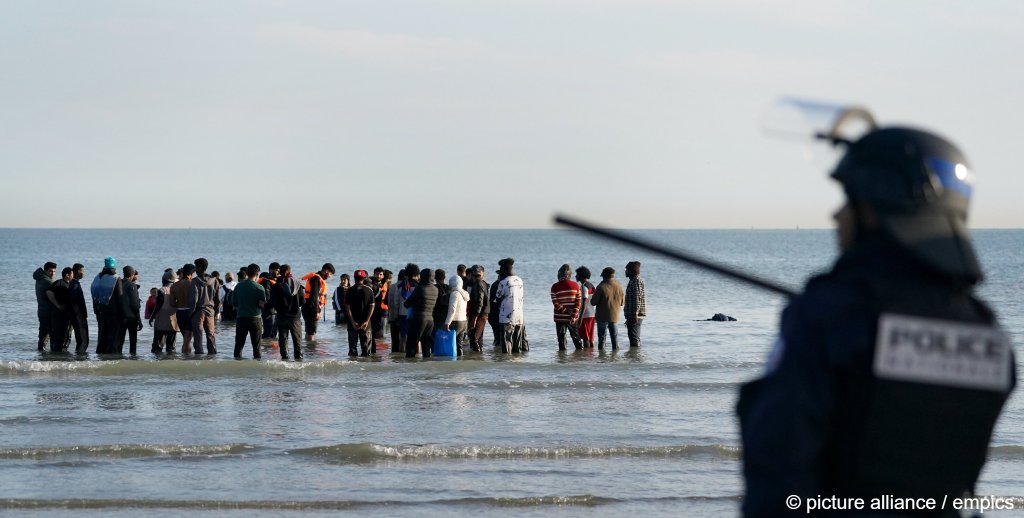
The spokesperson for UNSA added that although officers often faced violence in Calais and the area around it, he didn’t believe there had been a change of tactic, or any working group that might be trying to develop new tactics. Hocquard said that police officers were trying to do more because of criticism that they let a boat go "without doing anything."
This is also not the first time that tear gas has been used by French police against migrants. Last year at the end of June, the local newspaper La Voix Du Nord reported on the use of tear gas against a group of migrants trying to board a boat near Sangatte. They pictured the empty canisters left along the road following the altercation. The use of tear gas is allowed in France.
As of June 16, more than 16,000 people have crossed the Channel to the UK since the beginning of 2025, the latest data from the British government shows.
At least 15 people have died this year so far attempting to cross the Channel, according to the French authorities.
